Related Research Articles
The Tuskegee Airmen was a group of primarily African American military pilots and airmen who fought in World War II. They formed the 332nd Fighter Group and the 477th Bombardment Group (Medium) of the United States Army Air Forces (USAAF). The name also applies to the navigators, bombardiers, mechanics, instructors, crew chiefs, nurses, cooks, and other support personnel. The Tuskegee airmen received praise for their excellent combat record earned while protecting American bombers from enemy fighters. The group was awarded three Distinguished Unit Citations.

Charles Walter Dryden was a U.S. Army Air Force officer and one of the original combat fighter pilots with the 332nd Fighter Group's 99th Fighter Squadron, a component of the Tuskegee Airmen. Among the United States' first eight African American combat fighter pilots, Dryden is notable as a member of the Tuskegee Advance Flying School (TAFS)'s Class Number SE-42-C, the program's 2nd-ever aviation cadet program.

Alexander Jefferson (POW) (WIA) was an American Air Force officer, famous as one of the Tuskegee Airmen, the 332nd Fighter Group. He served in the United States Army Air Forces during World War II.
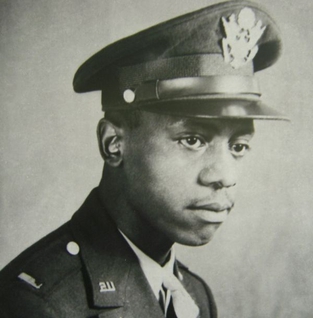
Alfonza W. Davis (MIA) (WIA) was the first African-American aviator from North Omaha, Nebraska, to be awarded his "wings." He was a member of the Tuskegee Airmen, a recipient of the Purple Heart, Distinguished Flying Cross and the Distinguished Unit Citation. Davis was assumed to be dead after going missing on or about October 29, 1944, on a mission over the Adriatic Sea off the coast of Italy.

Lee Andrew Archer, Jr. was an American fighter Ace in the 332nd Fighter Group, commonly known as the Tuskegee Airmen, during World War II. He was one of the first African American military aviators in the United States Army Air Corps, the United States Army Air Forces and later the United States Air Force, eventually earning the rank of lieutenant colonel.

Milton Pitts Crenchaw was an American aviator who served with the Tuskegee Airmen during World War II and was the first Arkansan to be trained by the federal government as a civilian licensed pilot. He served during World War II as a civilian flight instructor. He was one of the two original supervising squadron members. In 1998 he was inducted into the Arkansas Aviation Hall of Fame. The grandson of a slave, he was known as the "father of black aviation in Arkansas" who broke through color barriers in the military.

Spann Watson was an American military aviator and civil servant who served with the Tuskegee Airmen during World War II. He flew over 30 missions in North Africa, Italy and Southern Europe. In March 2007, Watson attended a ceremony in the U.S. Capitol rotunda, where he and other surviving veterans of the Tuskegee Airmen were honored with the Congressional Gold Medal in recognition of their service. He died on April 15, 2010, aged 93.

Brigadier General Charles Edward McGee was an American fighter pilot who was one of the first African American aviators in the United States military and one of the last living members of the Tuskegee Airmen. McGee first began his career in World War II flying with the Tuskegee Airmen, an all African American military pilot group at a time of segregation in the armed forces. His military aviation career lasted 30 years in which McGee flew 409 combat missions in World War II, the Korean War and Vietnam War.
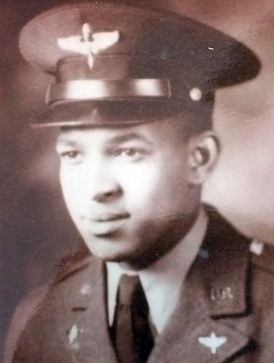
Clarence W. Dart, Sr. (WIA) was an American World War II fighter pilot and member of the Tuskegee Airmen. During World War II. Dart was shot down twice earning two purple hearts. He was the recipient of the Distinguished Flying Cross award.
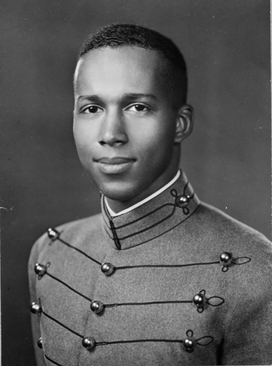
Robert B. Tresville Jr. (MIA) was an African American pilot who served in the original 332nd Fighter Group of the United States Army Air Forces, also known as the Tuskegee Airmen, during World War II. He was only the seventh African American to graduate from West Point. He was Commanding Officer of the 100th Fighter Squadron and was widely considered to be one of the 332nd Fighter Group's most promising leaders. He went missing in action after his plane went down over the Mediterranean Sea in June 1944.
Master Sergeant Buford A. Johnson was a member of the famed group of African-American World War II pilots and support personnel known as the Tuskegee Airmen. During World War II, he served as the chief mechanic servicing the fighter planes of the 99th Fighter Squadron of the 477th Composite Group.
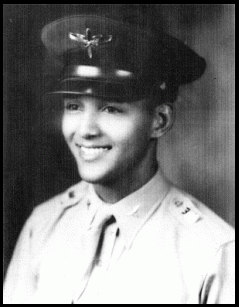
Robert Jones Friend was an American military officer and pilot who served with the Tuskegee Airmen during World War II and led the USAF's Project Blue Book from 1958 to 1963. He also served during the Korean War and the Vietnam War. He had a 28-year military career.
Sergeant First Class Thomas Franklin Vaughns is an American veteran who was a member of the famed group of World War II-era African-Americans known as the Tuskegee Airmen. He is a recipient of the National Defense Service Medal in 2019, for his service in the Korean War. He is also a member of the Arkansas Agriculture Hall of Fame.

James Johnson Kelly was a United States Army Air Force/United States Air Force officer who served with the 99th Fighter Squadron and 332nd Fighter Group. He served in the Korean War at the Battle of Chosin Reservoir, and he retired in 1971 as a Major in the Air Force and a Squadron Commander.
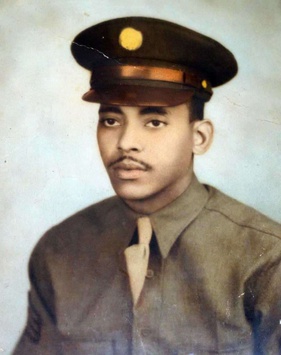
Sgt. Major Thomas Ellis from San Antonio, Texas, was a member of the famed group of World War II-era African-Americans known as the Tuskegee Airmen. He served in the 301st Fighter Squadron and the 332nd Fighter Group during WWII.

James Henry Harvey III is a retired United States Army Air Corps/United States Air Force (USAF) officer and former African American fighter pilot who served with 332nd Fighter Group's 99th Fighter Squadron, best known as the Tuskegee Airmen, "Red Tails", or among enemy German pilots, Schwartze Vogelmenschen. He is one of the 1,007 documented Tuskegee Airmen pilots.

LTC Alva Newte Temple was an officer in the U.S. Army Air Forces and combat fighter pilot with the 332nd Fighter Group's 99th Fighter Squadron and 300th Squadron, best known as the all-African American Tuskegee Airmen, "Red Tails," or among enemy German pilots, “Schwartze Vogelmenschen”. He was one of the 1007 documented Tuskegee Airmen Pilots.
Willie Lee Ashley Jr. was a U.S. Army Air Force officer and combat fighter pilot with the 332nd Fighter Group's 99th Fighter Squadron, best known as the Tuskegee Airmen.
Graham "Peepsight" Smith † was an U.S. Army Air Force officer and combat fighter pilot with the 332nd Fighter Group's 99th Fighter Squadron, best known as the Tuskegee Airmen. He was a member of Tuskegee Airmen's fourth-ever aviation cadet program and one of the 1,007 documented Tuskegee Airmen Pilots.

James Alonzo Walker was an American aviator from Manning, South Carolina who served as a Tuskegee Airman during World War II. He flew more than 102 missions in the European Theatre of WWII, and was shot down in action over Serbia at the time occupied Kingdom of Yugoslavia by Third Reich ( Germany). He was saved in Halyard Mission known in Serbian as in July 1944t, by Chetniks and general Dragoljub Draža Mihailović. He served in the military until 1964. He became the first African American commander of an integrated unit in 1950.
References
- ↑ "Obituary" Asbury Park Press, June 28, 2017
- ↑ "Tuskegee Airman shares history with deploying Soldiers - The United States Army". Army.mil. 7 February 2012. Retrieved 2012-11-30.
- ↑ "WWII black pilots, Tuskegee Airmen, get top civilian honor" By William Douglas, McClatchy Newspapers, March 30, 2007
